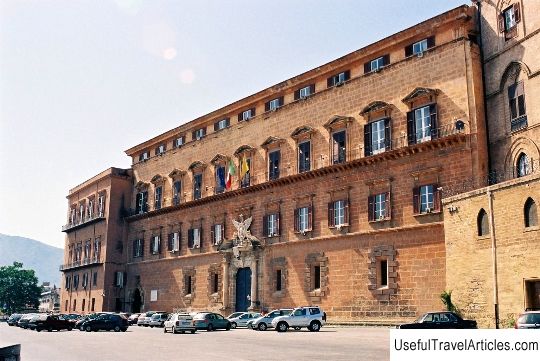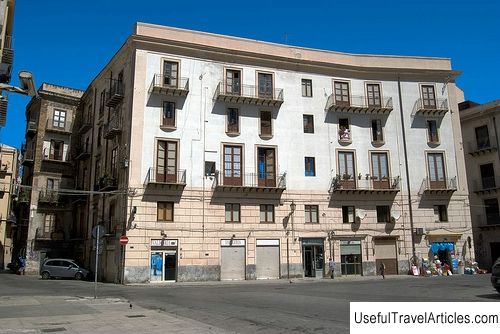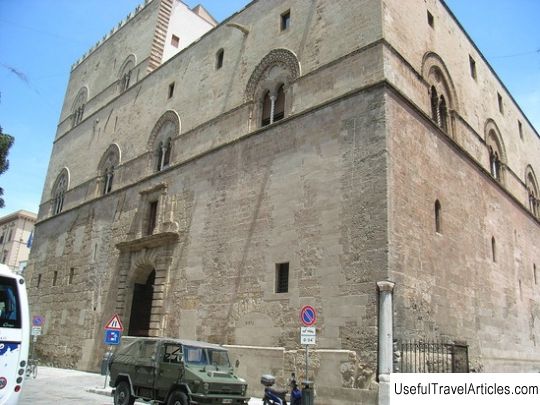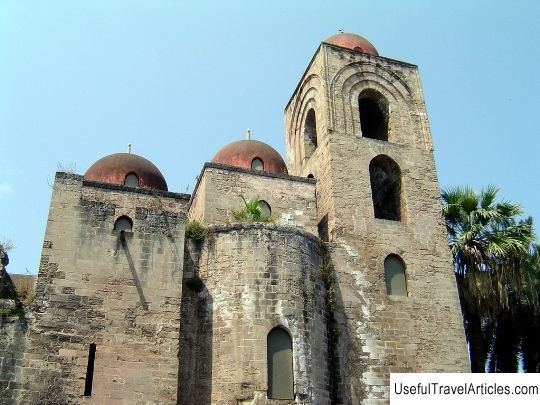Palazzo dei Normanni description and photos - Italy: Palermo (Sicily)
Rating: 8,5/10 (1943 votes) 
Palazzo dei Normanni description and photos - Italy: Palermo (Sicily). Detailed information about the attraction. Description, photographs and a map showing the nearest significant objects. The title in English is Palazzo dei Normanni. Photo and descriptionPalazzo dei Normanni, also known as Palazzo Reale - the Royal Palace - is the ancient residence of the kings of Sicily, located in the historic center of Palermo. The palace is remarkable in itself as a monument of Arab-Norman architecture, in addition, inside it is the Palatine Chapel - an exquisite and luxuriously decorated personal chapel of the kings. A long time ago, on the site of the present Palazzo, there were already buildings that belonged to the Phoenicians. Later they were replaced by the ancient Roman fortifications. When the Arabs conquered Sicily in the 9th century, they built a fortress on the site of ancient ruins, called the Palace of the Emirs - from here they controlled the inhabitants of Palermo. At the end of the 11th century, the rule over the island passed to the Normans, and at the direction of Duke Robert Guiscard, a government residence was established in the palace of the emirs. All buildings were connected to each other by arches and were surrounded by gardens laid out by the best gardeners of the Middle Ages. And Guiscard's nephew Roger II turned the former fortress into a luxurious palace. It was under him in 1132 that the famous Palatine Chapel was equipped and four towers were built - Pisa, Red, Greek and Joaria. Roger's son King William I the Evil built another tower - Kirimbi. Unfortunately, only the Pisa church dedicated to Saint Ninfa has survived to this day. At the end of the 18th century, it housed an astronomical observatory. For a whole century, Palazzo dei Normanni flourished and even became the imperial residence of the Hohenstazfen dynasty. However, after Palermo lost its capital status and until the 16th century, the palace again turned into an ordinary fortress. In those years, most of the furnishings of the palace and interior items were lost. In the 16th and 17th centuries, when the Palazzo became the seat of the Spanish viceroys of Sicily, it underwent a series of renovations, during which it was significantly expanded. A new front facade was created overlooking Piazza Victoria, the Fountain Courtyard and the courtyard of Makeda were designed, named after one of the Viceroys. In 1735, the courtyard of Makeda was connected by a magnificent staircase to the royal chambers on the third floor. Today, Palazzo dei Normanni is the seat of the Parliament of the Autonomous Region of Sicily. And the Palatine Chapel - without a doubt the best example of the Arao-Norman-Byzantine style - was turned into a museum, visitors can admire sumptuous golden mosaics, painted wood ceilings and marble inlays.         We also recommend reading Negotiating stone description and photo - Russia - North-West: Solovetsky Islands Topic: Palazzo dei Normanni description and photos - Italy: Palermo (Sicily). |




